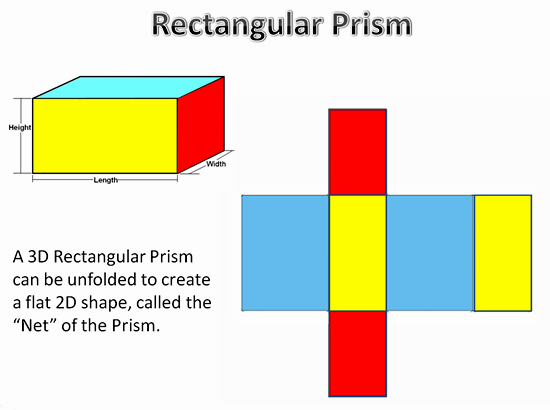Make the internet a better place to learn
A pyramid has a parallelogram shaped base and a peak directly above its center. Its base's sides have lengths of #8 # and #2 # and the pyramid's height is #9 #. If one of the base's corners has an angle of #(5pi)/12#, what is the pyramid's surface area?
Answer:
Explanation:
 )
)
What is the side length of the smallest sized equilateral triangle that can be placed on the (x,y) plane where all coordinates are integers AND no side is horizontal and no side is vertical?

Answer:
There is no such triangle, due to
Explanation:
Without loss of generality, one of the vertices is at
Let the vertex anticlockwise from
The midpoint of the corresponding side is
The line through
The third vertex of the triangle lies on the line through the midpoint
In fact it will lie at the point:
#(m/2, n/2) + sqrt(3)/2 (-n, m) = ((m-sqrt(3)n)/2, (n+sqrt(3)m)/2)#
since the height of an equilateral triangle is
So we require
Since
ABCD is a trapezoid with line BC perpendicular to line AB and line BC perpendicular to line CD. AB=13 BC=12 CD=8.A line segment is drawn from A to E, which is the midpoint of line CD. What is the area of triangle AED?

Answer:
Explanation:
The trapezoid described is somewhat as the figure below:
The formula of the area of the triangle is
Since AF is perpendicular to the triangle's side DE, and AF=BC=12, we have:
The area of a circle inscribed in an equilateral triangle is 154 square centimeters. What is the perimeter of the triangle? Use pi=22/7 and square root of 3= 1.73.
Answer:
Perimeter
Explanation:
This is Geometry, so lets look at at a picture of what we are dealing with:
We are told
and to use
If
and
Perimeter
The base of an isosceles triangle is 5, the height lowered from one end of the base is 4. What is the surface area?

Answer:
Explanation:
The area of any triangle is given by
Therefore the area here is
The length of a leg of an isosceles right triangle is #5sqrt2#. How do you find the length of the hypotenuse?

Answer:
The hypotenuse
Explanation:
 )
)
The above triangle is a right angled isosceles triangle , with
The length of the leg given
So,
The value of the hypotenuse
Each interior angle of a regular polygon lies between 136 to 142. How do we calculate the sides of the polygon?

Answer:
Explanation:
In a regular polygon each interior angle can be obtained in this way:
From the conditions of the problem:
That's the conjugation of this two inequations:
Resolving the first inequation
Resolving the second inequation
Conjugating the two inequations
Since
By the way
How do you calculate the overlapping area between intersecting circles?

Answer:
Calculate the area of the circular sector, from which subtract the area of the triangles whose base is the circles' chord defined by the intersection points; finally sum the results.
Explanation:
Consider Figs. 1 and 2
Figure 1 shows two circles (with centers
The area of interest is encompassed by arcs ADB and AEB.
In such a problem, most probably
We only need one more information to determine the area of the region ADBE: the proportion of any of the areas of circular sector to the total area of its circle or the angle of the circular sector (
If we have the coordinates of the center points C1 and C2 as well as the radii
If we get the chord AB (called "x" in Figure 2 ) we can obtain
Knowing
Next we can easily find
Then with the chord AB (
Next we need just to subtract from each circular sector the area of its triangle.
Finally, we sum the results of the aforementioned subtractions obtaining the area of interest. Job done!
OR we could integrate the area between the equations of the two circles from the point A (
In a quadrilateral ABCD ,which is not a trapezium.It is known that <DAB=<ABC=60 DEGREE.moreover , <CAB=<CBD.Then A) AB=BC+CD B) AB=AD+CD C) AB=BC+AD D) AB=AC+AD ? Choose correct option.

Answer:
C)
Explanation:
To ease the comprehension of the problem refer to the figure below:
If the sides BC and AD are extended the
First, in addition to the angles informed it was possible to determine other interior angles of the triangles ABC and ABD, as shown in the figure.
Then using the Law of Sines on these triangles:
#triangle_(ABC)#
#"AB"/sin (120^@-alpha)="BC"/sin alpha="AC"/sin 60^@#
#triangle_(ABD)#
#"AB"/sin (60^@+alpha)="AD"/sin (60^@-alpha)="BD"/sin 60^@#
To focus on viable hypotheses I suggest to begin trying to prove a specific case.
For instance
From
From
Note that
Finally,
#AD+BC=5*(sin 15^@+sin 45^@)/(sin 75^@)=5*1=AB#
So in this case hypothesis (C) is true (I tried the others and verified that they are false.)
Now for the general proof of the hypothesis (C), following the same steps that worked for the specific proof:
From
Observation:
#sin (120^@-alpha)=sin (180^@-(120^@-alpha))=sin(60^@+alpha)#
Therefore,
# "BC" ="AB" * (sin alpha)/((sqrt(3)/2)*cos alpha+(1/2)*sin alpha)#
From
This will get you
#AD="AB"*sin(60^@-alpha)/sin (60^@+alpha)#
#=AB((sqrt(3)/2)*cos alpha-(1/2)*sin alpha)/((sqrt(3)/2)*cos alpha+(1/2)*sin alpha)#
Finally,
#BC+AD="AB"(sin alpha+(sqrt(3)/2)*cos alpha-(1/2)*sin alpha)/((sqrt(3)/2)*cos alpha+(1/2)*sin alpha)#
#BC + AD ="AB" * 1#
Therefore,
#AB=BC+AD# and the hypothesis (C) is true.**
What is the surface area formula of a 3-dimensional rectangle?

Answer:
Explanation:
For a rectangular prism with sides
#"SA"=2(wl+lh+hw)#

This occurs since there are two pairs of three different faces on every rectangular prism.
Each pair of faces is a different rectangle using two of the the three dimensions of the prism as its own side.
One side is just
This could also be imagined as a series of flattened-out rectangles:

The blue rectangles are
The yellow rectangles are
The red rectangles are
Again, the surface area would be
#"SA"=2wl+2lh+2hw#
#=2(wl+lh+hw)#